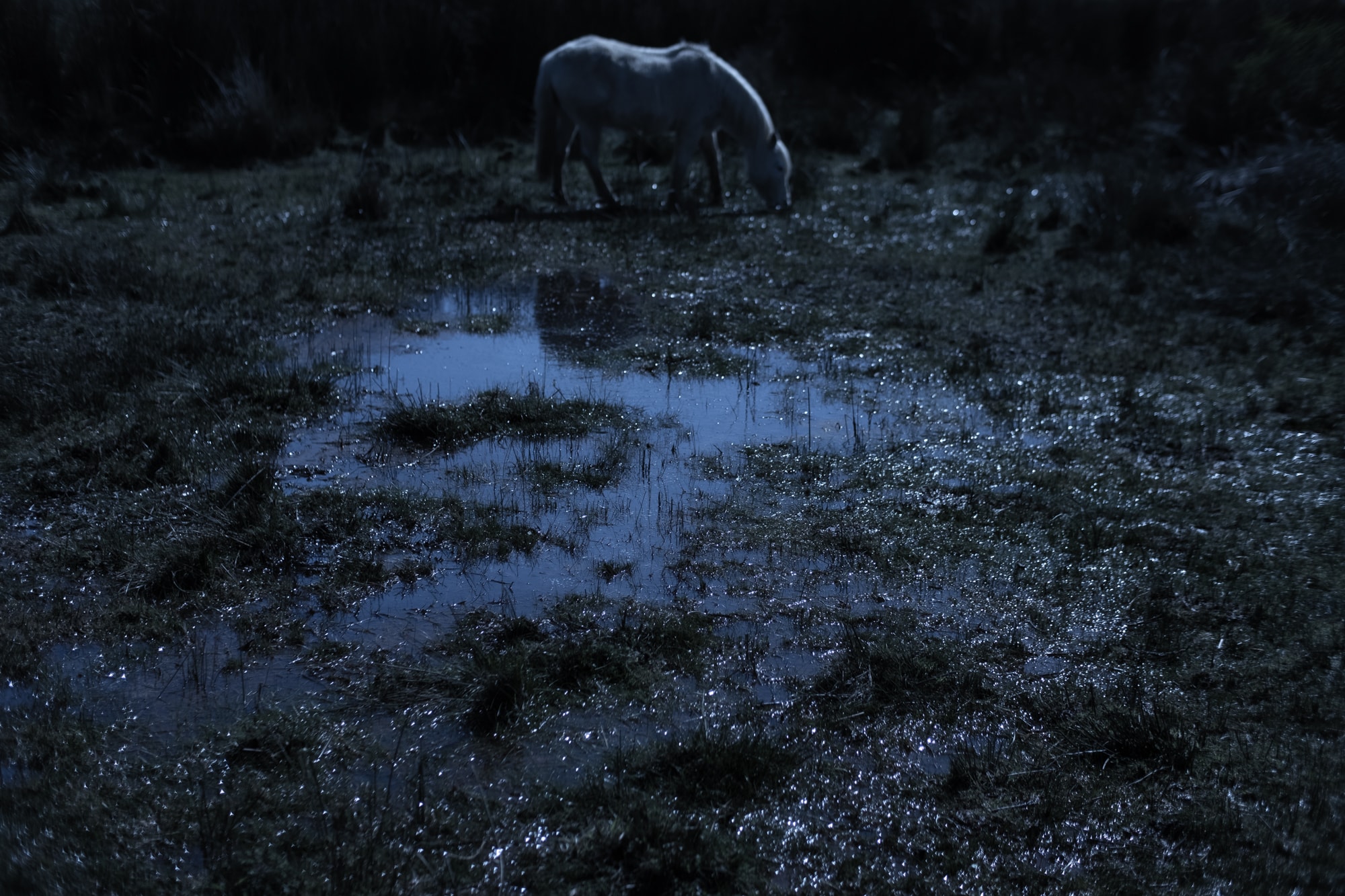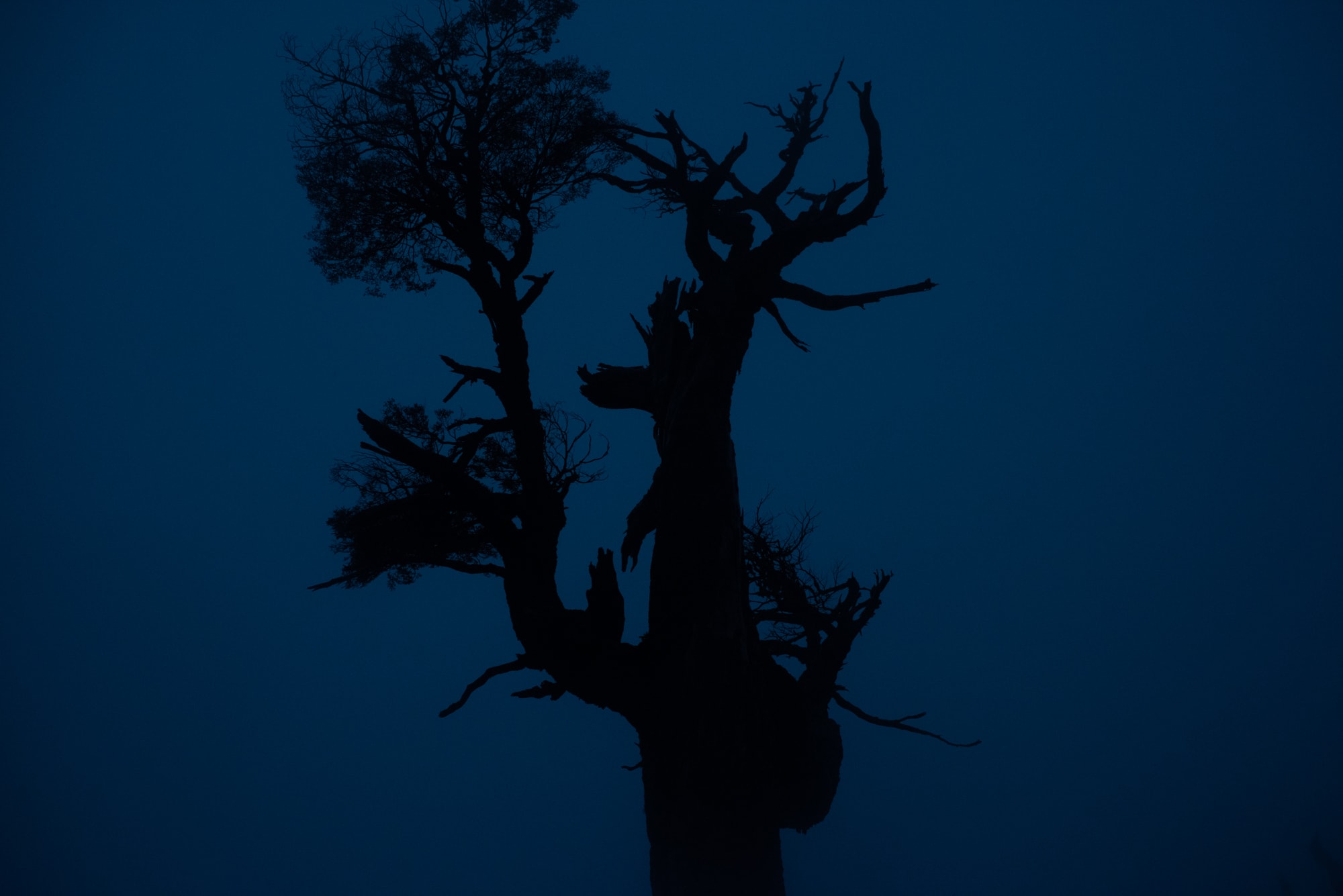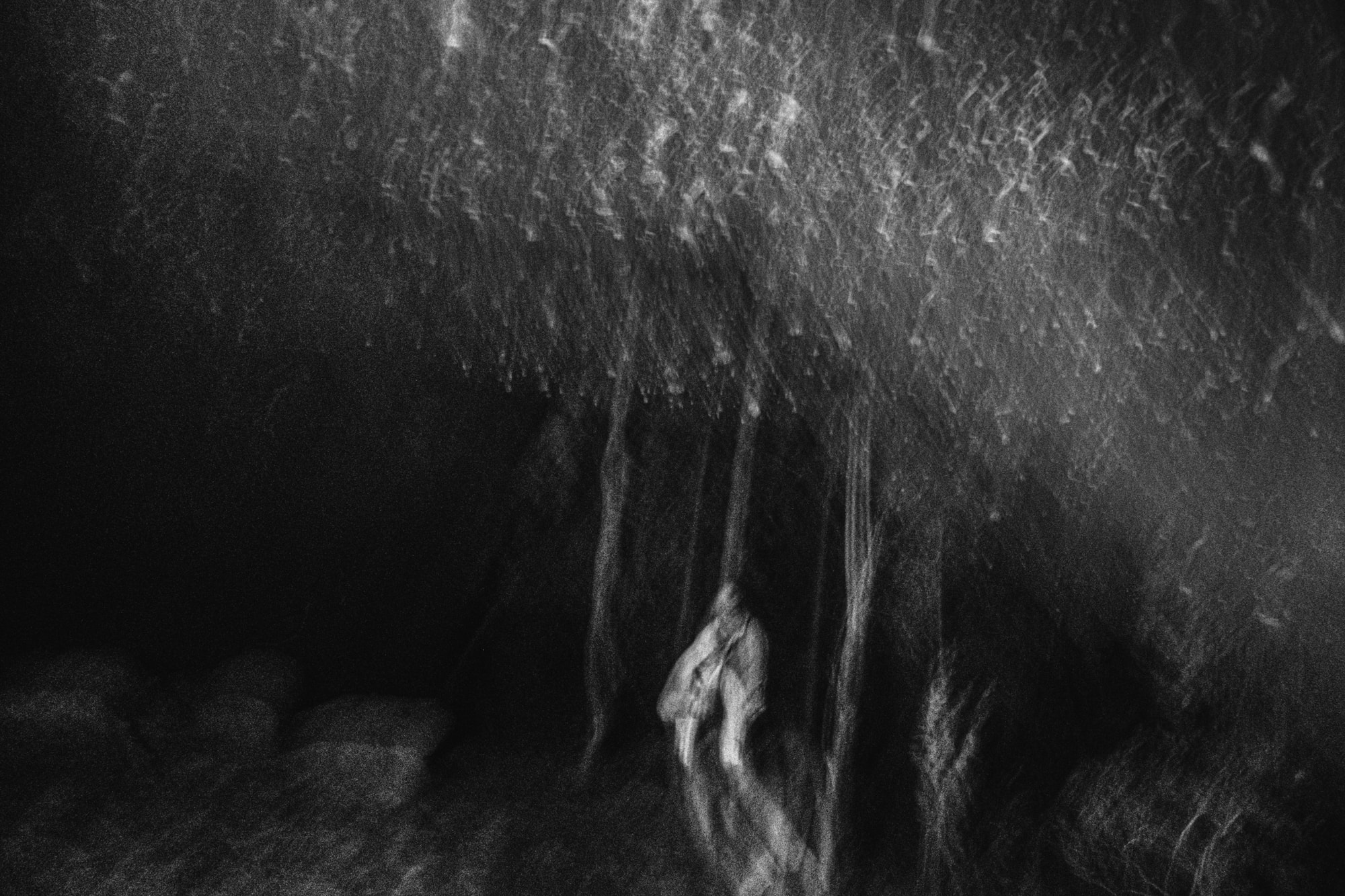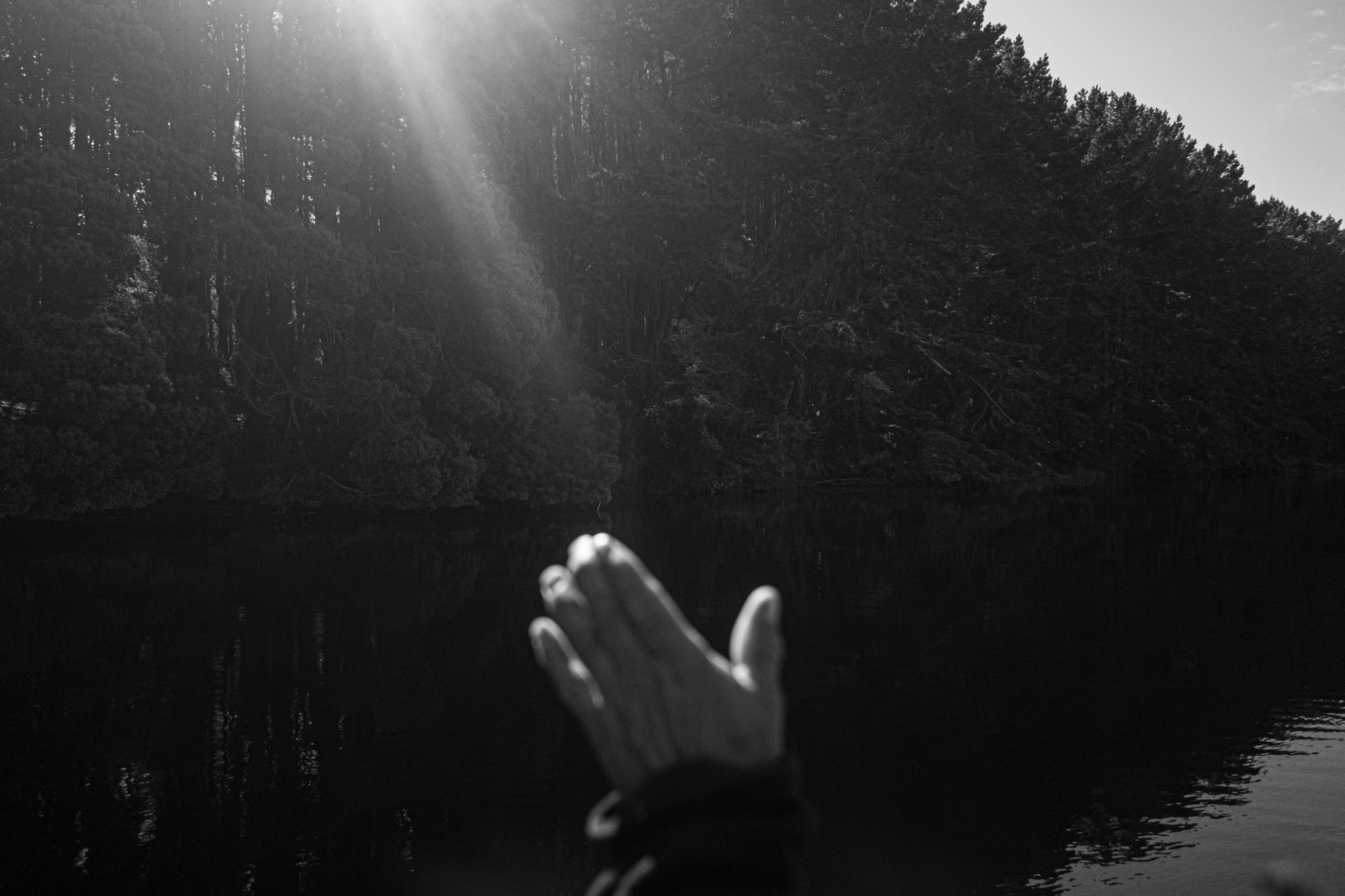
Landscape intimacy
Nicolás Amaro has been thinking for years about how we relate to nature. He started by observing himself and then began working with other people, such as the Mapuche communities on the southern coast of Chile. In that search, he started Treng Treng: images that reveal how places and landscapes possess different layers of meaning, shared by some and ignored by others.
By Marcela Vallejo
Since he had a camera in his hands, Chilean photographer Nicolás Amaro began to seek to create images that would allow him to understand his relationship with the environment around him. That path led him to wonder how other people understand the world and how they relate to spaces, places, and nature.
In this way, he worked in Horcón with fishermen from central Chile. “The character of the fisherman is that of one who leads a life mounted on the uncertainty of the sea, a black beast that feeds him and at the same time threatens to take his life.” In a polluted area with inhabitants in a highly vulnerable situation, the photographer was interested in understanding what life was like for these people and how they related to the sea.
In 2019 he traveled to Italy. During a residency in Citta del Arte, Biella, northern Italy, he met a young 32-year-old Piedmontese man who had decided to leave the city and dedicate his life to shepherding. Sharing, with this man, moving animals, and talking about philosophy, politics, and anarchism made Piamonte.
The thread that unites these projects is the interest in understanding what we call nature and how we relate to it. In this way, Nicolás found the idea of landscape and placed different ways to enter and understand them. He says places are not the same for everyone; there are other readings and interpretations of the same place. Meanings vary and can be in contact. Nicolás looks for hinges with his images that allow him to see these encounters.
But he is also interested in making his images places of dialogue. The construction of the image for this photographer has an important point when it is read by other people and transformed into other things. His subject matter is activated and has an impact on the world. That is the basis of Treng Treng, a project he carried out with Mapuche communities on the southern coast of Chile, which we discuss in this interview.
How did you start the Treng Treng project?
At the end of 2019, I went to live in La Araucanía in the south. By then, I had been photographing nature in more experimental works.
I found another territory, other communities, and landscapes when I went to the south. I started a personal project in a classic mountain forest I lived in those days. At the same time, we started with friends to develop an NGO social project to contribute to the local communities around us. We wanted to create relationships with other communities in that territory.
That is how I met the Lafkenches, the Mapuche communities of the coast. I became interested in transforming that encounter into a photographic project. We began to develop friendships; they welcomed me well in a year of visits. In the meantime, I was researching and reading, and elements appeared that allowed me to understand another way of relating to nature.
“The images speak of something emerging from the shadow and the textures. Textures are very present in my work, and I feel that I read them as codes, as registers of things, movements, and an element’s history. As if the texture of a stone speaks of the origin of that stone.”
In the presentation of Treng Treng, you say that during a period, you visited this Mapuche community on the coast and presented the photos to them as elements of projective reading to enter into specific conversations. At what moments did you take the photos?
It was about two years. At some points, I would take photos, bring them back, and show them to certain people. For example, there is a photo of the bark of an araucaria tree. I took that picture where I live and took it to a Williche friend I met in another town. It began to seem very interesting to me that, in the end, I was generating readings of territory from my perspective, but I could take the images. When I put them before another person’s reading, the image began to transform.
Then I took that photo of bark to Mauricio, and Mauricio told me that it made a lot of sense to him with the last Nguillatun -the most important ceremony of the Mapuche-because of much of what he heard from the grandparents in that ceremony. It was compelling because the ceremony was held just as the covid began. In part, what they talked about was already foreshadowing that times of scarcity and difficulty were coming. I found it fascinating that this content could be sustained in an image.
By showing it and him telling me about it, we were generating photography together in an encounter. In that sense, the photo became a kind of collaboration, and I also felt it functioned a bit like an oracle. There I thought I was starting a dialogue with the people I was portraying, based on these visual elements, as if I was going back and forth with them. That feedback seemed more interesting than just picking up my experience and leaving. Also, it seemed to me that it was opening up another beta of this device that I found more interesting.

This experience also includes listening, another critical element that you mention in the introduction of your project. This element also allows us to better understand this exercise of reading and creating from images. But I know that it goes beyond that. What did you think about it?
When I was setting up the exhibition, I was concerned about installing sound because the theme of listening had been making so much sense throughout this experience. The town where this happens is called Tolten, and they explained that this name comes from treng treng, which refers to the sound of the river or water passing through the stones. In other words, the river is named after its sound.
The Mapudungun, the Mapuche language, is the land’s speech, and the onomatopoeia, as an element of origin of words, that is to say, of sound, is very present in the Mapuche language in general. Then the aspect of sound and listening appears significant in the cosmovision because the names are given, and many things are understood from that. In that sense, the auditory element was taking preponderance.
These elements are exciting. They make me think of your psychology studies. But also, in the construction of the images, there are things that they reiterate, for example, shapes, stains, and textures.
The images speak of something emerging from the shadow and the textures. Textures are very present in my work, and I feel that I read them as codes, as registers of things, of movements, of the history of an element, as if the texture of a stone spoke of the origin of that stone.
In this conversation, we are raising many elements of approaches to information, such as the projective, listening, and perhaps textures, as ways of reading. And they are ways of reading. All of them elude a bit the direct or clear statement or affirmation. From the photo, I also believe that many times some of us fight with what is evident and what seems univocal. As something that is said as it is, I refer to the photo as evidence, that newsworthy aspect that says this happened.

I have systematically escaped from that by looking for ways of listening or reading that allow me to see various, other, or more subjective assignments. Listening perhaps doesn’t have that intricate image thing that affirms, that says, “This is the evidence.” Listening is more personal and subjective, like projective elements and images that evoke something rather than present it. That also allows for a slower reading because it is more open to interpretations than facts or assertions. In that sense, it is more detailed and more reserved.
With this way of working, I am looking for encounters, so I share photos and receive back conversation, which begins to influence the image itself. How to make the photographic material be filled with other contents and affect other things to activate it.

You said you were also interested in seeing the relationship between people and nature. What did you find with the Mapuche people? What is that relationship like for them?
It is a relationship that depends on the day-to-day and can get worse or better. It is very concrete. When it gets worse, for example, nature reacts, and we start to have these systemic problems like covid. It’s a daily thing; it’s almost like a relationship with another person. There is reciprocity; there is justice. And nature is genuine; it expresses itself, and it responds.
Don Alfredo, a traditional lonko, told me some of the stories he heard as a child. That is an area of tsunamis; the most enormous tsunami in the world was recorded here in 1960. Don Alfredo says that the ancients could stop the sea, he said, and he meant that there was a two-way relationship with nature. A living dialogue in which you could listen and respond, and your heart responded.


